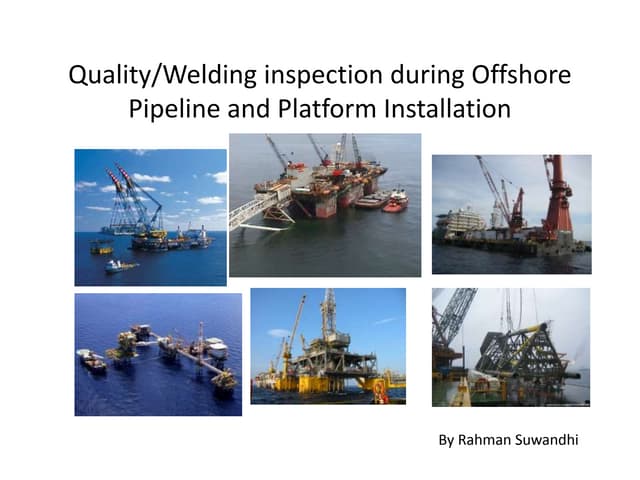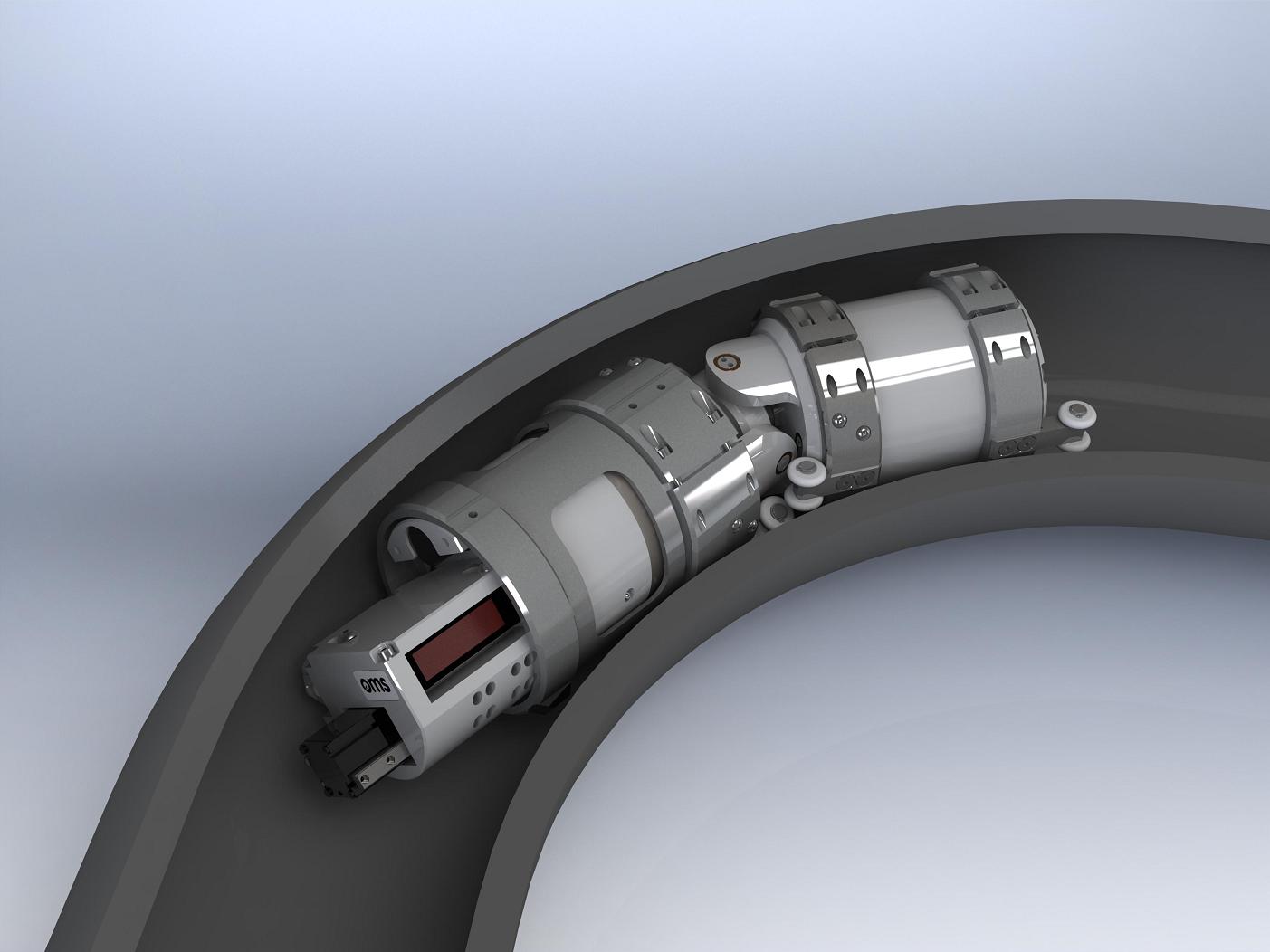Comprehensive Pipeline Welding Inspection: Protecting Facilities Integrity
Wiki Article
Understanding the Fundamentals of Pipe Welding Examination: Essential Aspects for Examining Weld High Quality and Stopping Failures
In the world of pipeline welding evaluation, the risks are unquestionably high, necessitating a comprehensive understanding of fundamental concepts to make sure weld high quality and mitigate failing risks. Various essential aspects come into play, including the option of appropriate materials, the application of advanced inspection strategies, and the acknowledgment of prevalent welding defects. In addition, adherence to regulative standards plays a crucial function in maintaining system honesty. Yet, the complexities inherent in these procedures increase important inquiries regarding ideal methods and arising innovations that could redefine examination procedures-- inquiries that call for additional expedition.Importance of Weld High Quality
The integrity of a pipeline is basically dependent on the high quality of its welds, making weld high quality a vital consider ensuring safe and effective operation. A pipeline weld acts as a joint factor where materials are joined, and any type of shortages around can cause considerable architectural weak points. Poor bonded quality can result in leakages, ruptures, and catastrophic failures, positioning major security threats and ecological threats.Numerous variables add to the top quality of a weld, consisting of the selection of welding procedure, the abilities of the welder, and the problems under which the welding is done - Pipeline Welding Inspection. Poor prep work, incorrect warm input, and contamination can jeopardize weld stability, leading to issues such as porosity, insufficient blend, or splits. As a result, rigid quality assurance procedures need to be carried out throughout the welding process to mitigate these threats
In addition, the long-lasting performance of a pipe is greatly affected by the durability of its welds. High-quality welds not just improve the overall toughness of the pipe but additionally prolong its life span, minimizing the requirement for costly fixings and downtime. For this reason, making sure exceptional weld quality is vital in pipeline layout and upkeep techniques.
Secret Inspection Methods
Guaranteeing weld top quality requires the execution of efficient inspection methods to recognize prospective flaws prior to they lead to failures. Pipeline Welding Inspection. Amongst the most extensively used approaches are visual evaluation, radiographic testing (RT), ultrasonic screening (UT), and magnetic particle screening (MT) Each method serves an unique objective and is selected based upon the specific demands of the pipe projectVisual evaluation is the very first line of defense, enabling examiners to evaluate surface conditions, alignment, and overall workmanship. Radiographic screening provides a detailed sight of inner weld honesty by utilizing X-rays or gamma rays to find subsurface problems.
Ultrasonic testing employs high-frequency audio waves to review the density and stability of welds, making it optimal for finding interior interruptions. Magnetic bit testing is a dependable method for determining surface and near-surface defects on ferromagnetic products by applying electromagnetic fields and great ferrous bits. By utilizing these essential examination methods, pipeline welding assessors can make sure the best criteria are preserved, ultimately causing much safer and more trustworthy pipeline systems.
Usual Welding Flaws
Amongst the most prevalent problems are porosity, which takes place when gas allures in the weld steel, producing gaps that weaken the joint. One more considerable concern is lack of combination, where the weld steel does not adequately bond with the base material, compromising the joint's stamina.
Fractures are likewise a critical issue, materializing in different kinds such as warm splits, chilly splits, and origin splits. Each kind poses distinct difficulties and needs certain examination strategies for discovery. Undercut is one more issue that can lower the weld's cross-sectional location, bring about stress here concentration points, while slag inclusion occurs when non-metallic material becomes entraped in the weld pool, adversely affecting the mechanical properties of the weld.
Additionally, wrong grain form can cause irregular anxiety circulation. Recognizing these typical problems is important for examiners and welders alike, as early detection and correction are essential to making certain the durability and reliability of pipeline systems.

Materials and Their Effect
Picking the appropriate materials for pipe welding significantly influences the total efficiency and reliability of the welded joints. The option of base steels, filler products, and coverings plays a vital role in identifying the stamina, rust resistance, and toughness of the welds. As an example, carbon steel is commonly used for its balance of stamina and expense, yet it might be susceptible to corrosion in certain environments, requiring making use of safety coatings or corrosion-resistant alloys.Furthermore, dissimilar metal welding needs cautious consideration of thermal growth residential properties and possible galvanic corrosion. The compatibility of materials can significantly affect the microstructure of the weld, resulting in variations in mechanical homes. As an example, stainless-steel supplies excellent deterioration resistance but may need specific filler products to guarantee an audio weld joint.
Furthermore, the impact of temperature and environmental conditions on product selection can not be undervalued. High-strength steels may shed ductility at raised temperature levels, while low-temperature applications might call for materials with boosted toughness. Inevitably, comprehending the implications of material selections is important for accomplishing ideal weld quality and preventing failings in pipe systems.

Regulatory Requirements and Conformity
Governing requirements and compliance play a pivotal role in pipeline welding, developing the framework within which effective and secure practices are kept. These standards are developed by different organizations, including the American Culture of Mechanical Engineers (ASME), the American Welding Culture (AWS), and the Pipeline and Hazardous Materials Safety And Security Management (PHMSA) Complying with these guidelines ensures that welding treatments fulfill the required high quality and safety criteria.
Conformity with regulatory criteria is essential not just for ensuring the stability of the welds however additionally for protecting the atmosphere and public safety and security. Assessors are charged with validating that welding procedures comply with these standards with extensive assessments of both the processes and the last welds. This entails evaluating welder qualifications, welding advice procedures, and the products utilized.
Failing visit the site to adhere to well-known laws can cause considerable effects, including pricey repair work, legal liabilities, and tragic failures. Consequently, companies should incorporate compliance into their functional techniques, cultivating a society of safety and top quality. Routine training and audits are important components in maintaining adherence to these regulative requirements, ensuring that all workers are well-informed and equipped to promote the highest degrees of pipeline welding high quality.
Verdict
To conclude, a comprehensive understanding of pipe welding evaluation is essential for making certain weld top quality and avoiding failures. By utilizing vital evaluation methods and acknowledging usual welding defects, examiners can properly examine the honesty of welds. Factor to consider of product option and adherence to regulatory criteria additionally boost the reliability and safety of pipeline systems. Eventually, these techniques contribute to the avoidance of leaks and disastrous failures, highlighting the essential significance of rigorous assessment processes in pipeline building and construction and upkeep.
In the realm of pipeline welding inspection, the stakes are indisputably high, necessitating an extensive understanding of fundamental concepts to ensure weld quality and alleviate failing risks (Pipeline Welding Inspection).The honesty of a pipeline is fundamentally dependent on the quality of its welds, making weld quality a crucial variable in making certain reliable and safe operation.Several elements contribute to the high quality of a weld, consisting of the choice of welding process, the abilities of the welder, and the conditions under which the welding is executed. Undercut is one more problem that can reduce the weld's cross-sectional area, leading to tension focus factors, while slag incorporation happens when non-metallic product ends up being caught in the weld swimming pool, negatively influencing the mechanical homes of the weld
In final thought, a detailed understanding of pipeline welding inspection is essential for guaranteeing weld top quality and stopping failures.
Report this wiki page